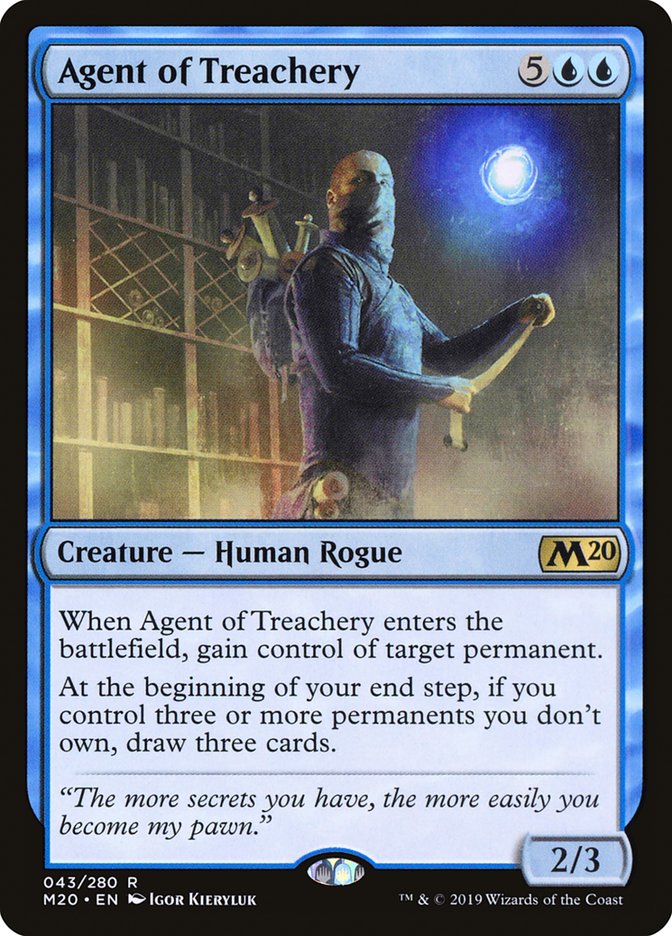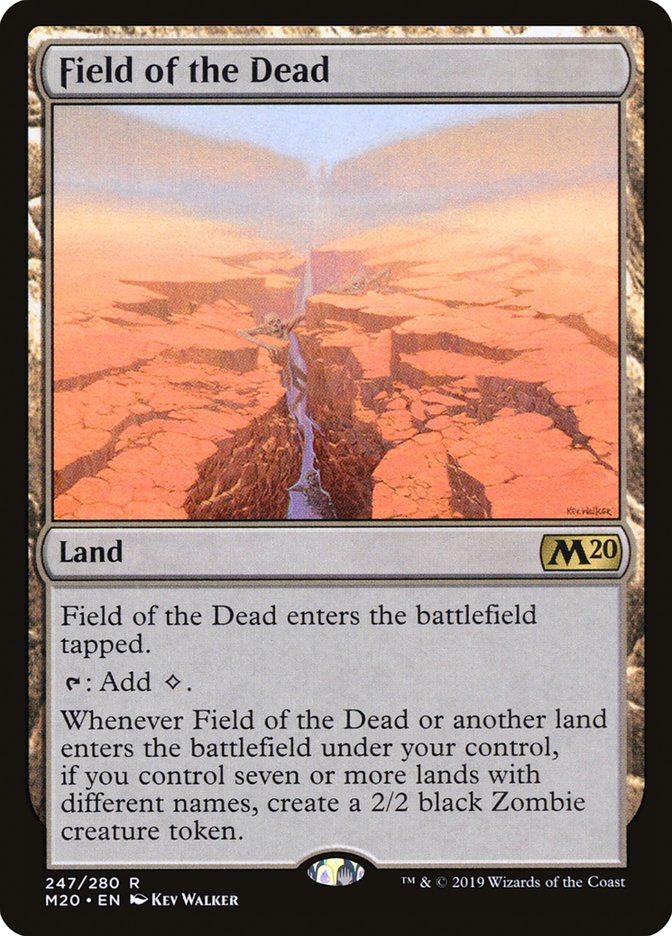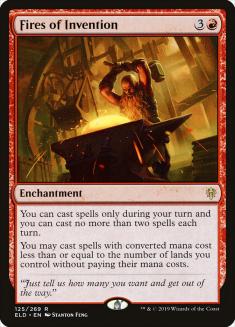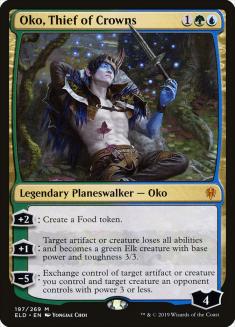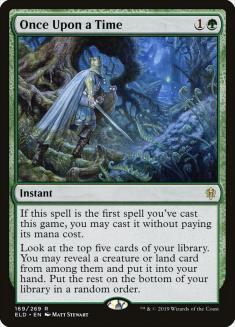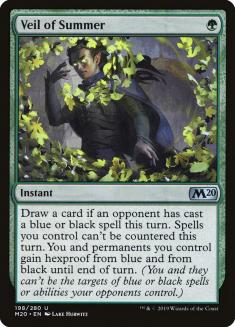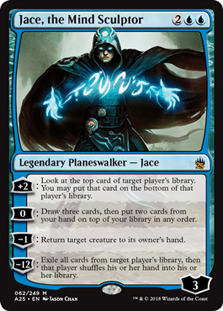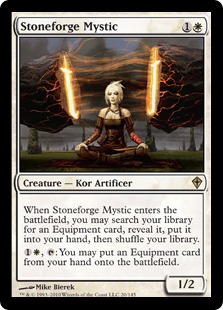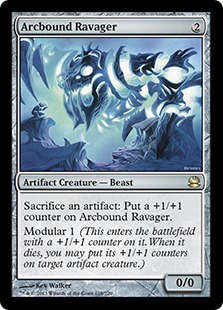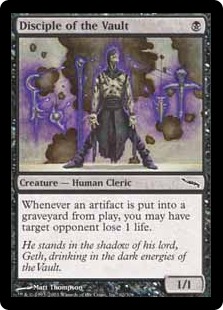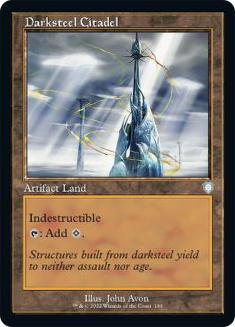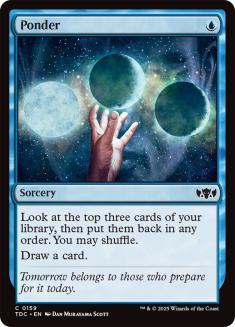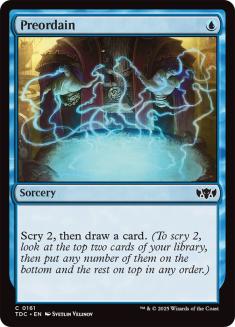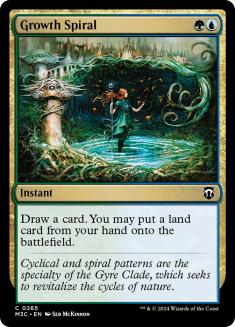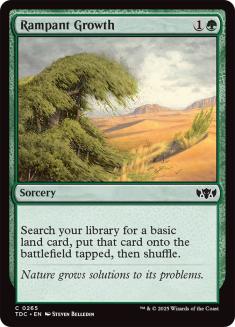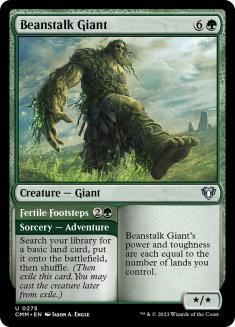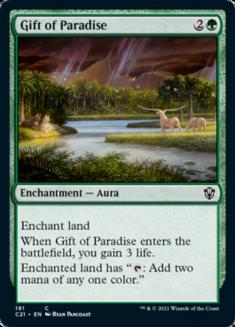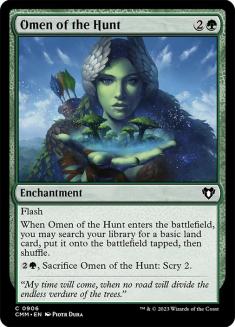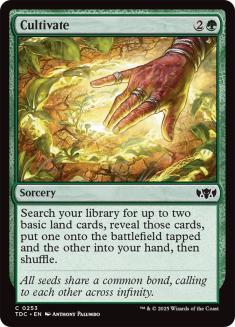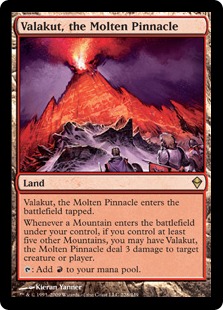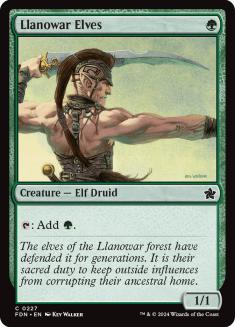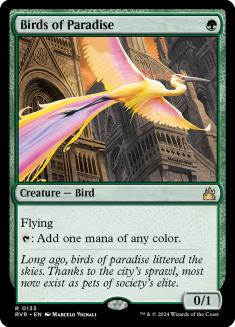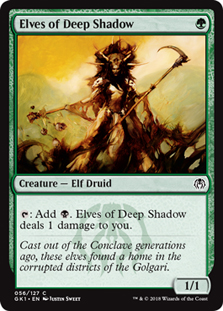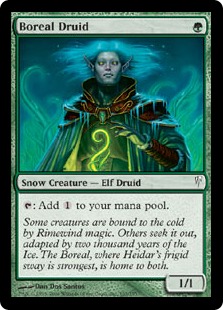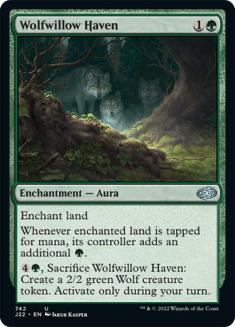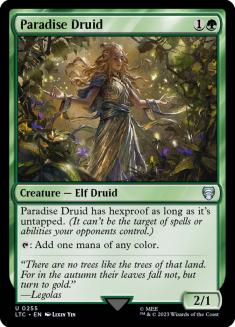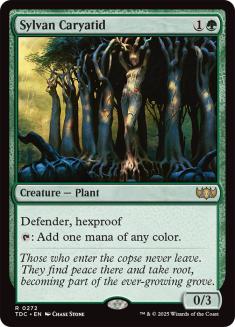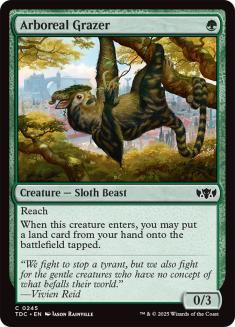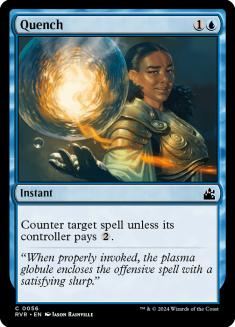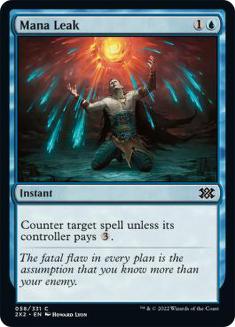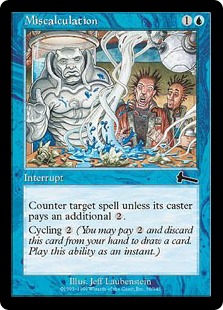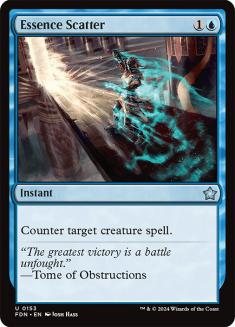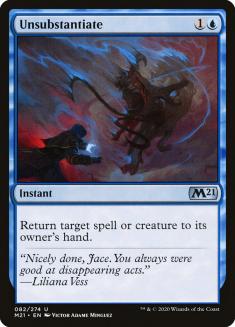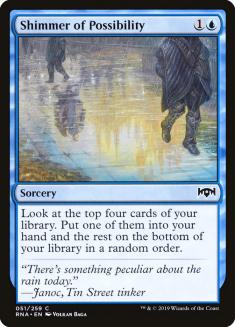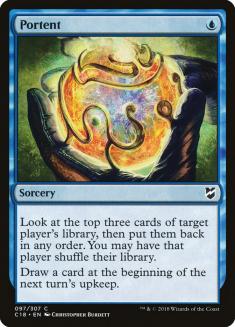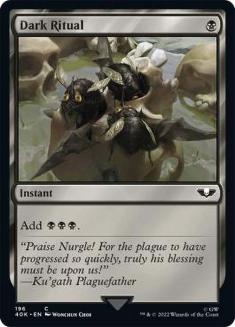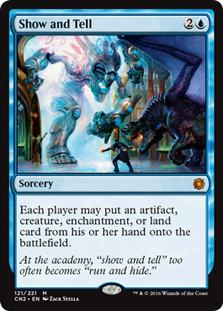Standard is in a weird place. It’s kind of like puberty, where things are growing at different rates and this can make life kind of awkward.
All kinds of changes are taking place, beyond just the reshaping of Magic’s mana curve (though that’s a big one in the background). On the one hand, there are half a dozen banned cards, plus the ten companions have all been radically recosted with an unprecedented form of “live balancing” (that I welcome, by the way, as it’s a more satisfying approach than just banning cards).
Who even knows what this format was supposed to be? But it is trending better and still has room to grow. There are so many sweet designs, and peeling a layer of degeneracy off the surface has the potential to bring so many more of them into the mix.
Remember when it was six years between Standard bannings? The Jace, the Mind Sculptor and Stoneforge Mystic bans were literally six years after the banning of Arcbound Ravager, Disciple of the Vault, and the six artifact lands.
And these two sets of bans were around two strategies that are among the greatest of all time for sustained levels of dominance.
Anyway, clearly the game is being balanced around different things these days, and that’s okay. Lots of games can be fun, and you can’t always go back to the innocence of days gone by. Remember, there were maybe six million players in 2005, when the Affinity cards were banned (which was already down in total numbers, but also in terms of activity).
By 2011, Wizards of the Coast (WotC) had successfully grown the player base to over ten million. They focused on acquisition; rode the success of Magic 2010, Zendikar, and Innistrad; expanded the Pro Tour and Grand Prix system; expanded Friday Night Magic; and continued to develop Duels of the Planeswalkers. By 2014, the number of players had more than doubled, and today, there are probably between 20 and 30 million players.
I bring this up because it’s important to remember just how much more fun it is when the community is large and thriving, and how successfully WotC has built it, over the past fifteen years. Part of making a game more accessible and able to serve a wider audience involves a lot of hard work and sacrifices that can have an impact on other parts of the game. And all of this is to say nothing of how a larger player base, faster communication, so many games getting played digitally, and trying to make cards for ten formats at the same time all make balancing more difficult and formats more quickly solved.
These sacrifices and these choices are difficult, thankless work, but have contributed to millions and millions of people getting to experience and enjoy Magic that might not have otherwise. This is not some blank check for designing or balancing at random, but I think it’s useful to keep the right perspective when considering judging the actions of people trying to please 25 million people at the same time, and offering them advice.
With all that said, I’d like to talk about one card in particular (you can probably guess) that I argue should not only be banned but should be studied carefully and used to reframe balance questions.
Just as how the true power of cards like Ponder and Preordain wasn’t understood…until it was, so too does Growth Spiral contain an opportunity for valuable improvement in considering of how cards are balanced and what they are balanced around.
When Michael J. Flores and I first saw Growth Spiral previewed, we were in disbelief. How was this not going to be a dominant and warping card?
Fast forward twenty months later, and Growth Spiral has, without question, had a long and storied career. Yet is it really getting the credit it deserves? After all, Scottie Pippin is an all-time great, but when you play on a team with Michael Jordan, you’re not always going to get the credit you might deserve. Growth Spiral has kicked it with the likes of Oko, Thief of Crowns, so it’s easy to see why it might get overlooked a little.
The reasons that Growth Spiral was so obviously busted to us are actually basically the same reasons it’s such an understandable design to talk yourself into. It’s also getting so much of its power from margins that are so easily swept under the rug, yet could be revealing if acknowledged.
So, what’s going on with Growth Spiral?
Well, for starters, it’s obviously an instant-speed Explore, but needing a blue mana instead of generic.
Even though becoming an instant is a huge upgrade on an effect like this, particularly at this cost, it’s easy to understand how you can talk yourself into such an equation. And besides, Explore didn’t have to get banned! After all, it’s basically just a Rampant Growth variant, right?
Yeah, the last enters the battlefield untapped, but sometimes you don’t actually have a land to put onto the battlefield, right? And yeah, you draw a random card from your deck versus a basic of your choice. Is the basic of your choice better selection? It’s understandable how you can talk yourself into this sort of debate.
Except Rampant Growth isn’t actually the bar. It’s a card that would be problematic for most Standard formats and usually isn’t legal. If your bar is Rampant Growth, you’re already talking about some space up near the ceiling (and above in most cases), but you’re talking about power in a mostly invisible form (like Ponder and Preordain once were) that will never be appreciated as much as it is strong.
Oh you can do three-cost Rampant Growths with upside all day long. It’s not the same thing at all. Rampant Growth effects have a serious multiplier the earlier you can cast them, and Turn 2 is a lot earlier than Turn 3. What’s more, a two-cost ramp spell puts you right into four mana, and nowadays, there are always more great fours than you could ever play (though you can play a lot). By contrast, there are fewer great fives, and you quickly get clunky if your deck has too many fives.
Even when you make extremely pushy, extremely powerful three-cost ramp spells, the risk to the health of the format is vastly different. When there becomes more incentive to play three-cost ramp cards, there are countless ways to get the better of them. Two-mana counterspells? Two-mana discard spells? Two-cost hatebears? Being able to use both of these kinds of effects a turn later, letting you put more pressure on your opponent? Any of the countless other ways you can capitalize on a chance to deploy an additional threat or two before needing to be able to react to a big opposing play?
Besides, if you can even break up a Rampant Growth, they still just get to cast a three-drop (which they probably have more great options than they can play, but play a lot). If you break up a three-cost ramp effect, what are they left with? How many fours can they really play without taking away from some of the space needed by fives? Some, sure, but not nearly as many as the Rampant Growth scenario with threes. So what happens? A lot of times, you just cast another three, this time on Turn 4.
We also can’t hand-wave how part of the equation with good three-drop accelerators is combining them with good two-cost removal, permission, creatures, whatever. While there are plenty of options, it does add another piece to the combo. For things to fire on all cylinders, you need a two-cost play, a three-cost ramp spell, and something worth ramping into. By contrast, Rampant Growth is effectively just a two-piece dinner.
Yes, if you keep increasing the rate of the three-cost ramp spell, you can make it “stronger” than Rampant Growth (and it’s not that Rampant Growth is inherently “broken”). Arguably, Uro and Cultivate already are stronger cards. However, when the format breaks in a way that makes Uro and Cultivate better than intended, there is much, much more room for the format to adapt, to adjust in healthy ways.
So, can you make formats with Rampant Growth that are healthy? Absolutely. It is riskier, though, and if you miss the wrong way, people will remember the Valakut, the Molten Pinnacle or the Primeval Titan, and blame them.
And after all, if it wasn’t for whatever pushed it over the line, it wouldn’t have been over the line!
Should they never do Rampant Growths?
Like Llanowar Elves, the first one of these in a format can be a powerful spice that can really open up avenues of deckbuilding, ranges of strategy, and more. It’s probably best not to have these always available, but you can make a lot of really great formats with a Llanowar Elves variant legal some of the time, and likewise with Rampant Growth.
So is the problem them stacking?
Actually, no, not at all. They are more different than they may appear, and they carry with them far different incentives. Combining them can be effective, but generally will be more healthy than two of either one would be.
Why such a difference between one or two versions of Llanowar Elves or Rampant Growth? Aren’t there tons of two-cost ramp cards right now, and some of them are Elves?
Okay, just to clarify, what I mean by a Llanowar Elves variant is a one-cost creature that taps to net a mana. It could have no power, deal damage to you, only produce colorless, whatever, as long as it nets you a mana that is practical to spend efficiently.
You can make as many two-cost versions as you want, as there’s just a nearly endless amount of space for strategies to adapt when they’re high, but it becomes much harder and much more repetitive when you have access to eight Llanowar Elves.
Why is that the cutoff?
When you have four copies of Llanowar Elves, you’ve got a 40% chance of seeing one in your seven cards. Obviously, we’re setting aside mulligans, but it’s not unreasonable to think that you’re going to have to play half your games without it. This limits how much you can build to exploit it, since you have to be able to function half the time without it, not even counting spots where it dies. By building to be able to function without it, you are less explosive with it. You’re also playing a greater variation of types of cards, and your games open up differently, more often.
When you have eight copies, this percentage skyrockets to over 65%. Factor in mulligans, and you’re talking about 80% of your games starting with Llanowar Elves, letting you really warp your deck under the assumption that you’ll have one.
Why is Rampant Growth at two such a big deal, if Llanowar Elves are only a problem at one? Well, the range of counterplay for creatures is far much greater, and available at low cost. Just as a three-cost Rampant Growth is much easier to react to in practice than a comparably “weaker” two-cost Rampant Growth, two-cost accelerator creatures are much easier to react to than one-cost variants.
Okay, let’s say we believe you, that doing more than one Llanowar Elves and more than one Rampant Growth is much more dangerous than the first. What does this have to do with Growth Spiral? It’s not like Growth Spiral is legal at the same time as Rampant Growth.
Whoa, whoa, whoa! There’s a lot to unpack there. To begin with, there are actually so many Rampant Growths right now, it’s not even practical to play them all!
Wolfwillow Haven is a great example of a weak “Rampant Growth,” but a Rampant Growth nonetheless. It doesn’t fix your colors, and it’s vulnerable to enchantment removal (which is far, far cheaper and more efficient to fight than land being on the battlefield ahead of schedule).
Paradise Druid is much stronger, fixing your colors beautifully, and it’s only slightly easier to interact with than Wolfwillow Haven, while offering far better and more efficient versatility (you know, by attacking or blocking).
Isn’t Paradise Druid a two-cost accelerator creature? Didn’t you say you can use as many of those as you like?
It’s not about it being a creature. It’s about the range of counterplay available when it’s too high. Paradise Druid and Wolfwillow Haven certainly have more counterplay available to them than Rampant Growth, but they are a lot closer to the Rampant Growth side of the spectrum than the Leafkin Druid side.
It’s not just that there are three Rampant Growths right now instead of one. It’s also that there are two one-cost accelerators…
Gilded Goose is more of a true Llanowar Elves, whereas Arboreal Grazer is actually a fourth Rampant Growth! Yeah, it is so much weaker and less reliable, but it stacks in all the bad ways, so that when it goes wrong, there is much less space to adapt.
While Gilded Goose is a great design, I think doing both Arboreal Grazer and Gilded Goose at the same time is a bad risk, just from giving people too reliable access to three mana available on Turn 2; however, the world we’re in now is actually so far past this, this package isn’t most ramp strategies’ first, second, or third option.
Four Rampant Growth variants is already extremely dangerous for when you miss, but Arboreal Grazer actually stacks particularly dangerously by providing a range of options for how to spend mana. When your hand is all twos and fours, you’re more prone to wasting a mana somewhere. When you’ve got Arboreal Grazer in the mix, you’re putting all your mana to good use early more often. You also make your threes better while reducing your reliance on them (casting a two and a one in the same turn, for instance).
So why isn’t Arboreal Grazer the problem?
First of all, it is part of the problem, and not just on account of being one of four Rampant Growths. It might be barely the third-strongest, but it’s far more problematic than Paradise Druid when it goes wrong.
My issue with Arboreal Grazer isn’t that you can’t make cards like this. It’s actually pretty interesting, the gamble, the kind of investment, the diminishing returns, being priced into playing with blockers, etc. It’s just that the cheaper and more difficult these cards are to interact with, the harder it is to adapt when things go wrong.
I think that for the Arboreal Grazer experience to be healthy, though, it should probably be coming from more of a space like, “I want a second Llanowar Elves or a second Rampant Growth so badly, I’m willing to play with a card like this.” There is danger to doing it like this, of course, as it can still go badly for you when it breaks wrong, but this tension, this gamble probably has more depth to it than, “Yeah, this is the only Rampant Growth, and it’s bad on its own, so don’t play ramp.” I’m not sure how often you want to play with that kind of fire, but over a long time span, it’d be a waste not to explore there, at least some.
So why aren’t Wolfwillow Haven and Paradise Druid the problem, then?
Well, they are part of the problem, too, as you really are taking such bigger risks when you let people stack these kinds of effects. I actually think that if you’re going to do two Rampant Growths, Wolfwillow Haven and Paradise Druid are a really compelling pair to allow. One making only green and the other five colors pushes incentives in different directions. Both allow interaction efficiently if you aim for them (albeit along a far more narrow band than traditional two-cost accelerator creatures). Both have play to them, decisions to be made, and they aren’t always the same decisions.
I think you’re taking a risk if you do two of these, but at least if both of them can be broken up and have different incentives, the game doesn’t start the same way as reliably and repetitively.
So you’re saying that Growth Spiral is the problem because it happens to be the most powerful of the four?
There’s more to it than that, but let’s not hand-wave just how much more powerful it is than the other three, nor how much harder it is to interact with. While Paradise Druid and Wolfwillow Haven would not be a bad pair to allow together, as far as double Rampant Growth formats go, either one would carry a lot of risks alongside actual Rampant Growth.
And Explore is stronger than Rampant Growth.
Explore playing the land untapped is such a major advantage. Also, early on, the ability to get you from two to four mana is more important than the color-fixing aspect. Later, the selection from Rampant Growth is definitely not worth the random cycling element of Explore. Put together, Explore and Rampant Growth would probably be comparable if Explore put the land onto the battlefield tapped (which would really come down to whether the fixing of Rampant Growth or exploiting this fixed Explore with tapped lands is the more important feature of the format).
But Explore is almost a full mana better than that as the game plays out. Yeah, sometimes you waste a mana, but it’s often quite easy to use Explore efficiently, whether by playing a tapped land or alongside basically any other play that is one mana off your turn. However, with Explore playing the land untapped, we’re kind of getting closer to the difference between Quench and Mana Leak.
This is a little misleading, as Rampant Growth is not at all on Quench’s power level, but Explore and Mana Leak are comparable, and if we upgraded Quench to Miscalculation, I think we’d be talking about something comparable to Rampant Growth.
You wouldn’t want to do Miscalculation all the time, but it’s not hard to see that it puts much less stress on a format than Mana Leak. Mana Leak shouldn’t be around all the time, but it’s not inconceivable to print sometimes.
Of course, we’re not talking about Explore. We’re talking about Growth Spiral, an instant, and it matters a lot. Blue usually has important two-cost instants as part of its kit.
Growth Spiral gives you an extremely efficient way to preserve the option of using one, as well as the option of accelerating into something bigger than your opponent was preparing for. How much better is Growth Spiral being an instant than a sorcery?
I think it’s fair to say that Anticipate and Shimmer of Possibility are fairly comparable in power level. Shimmer is probably slightly stronger, but they are close. Growth Spiral being an instant is far more valuable to many Growth Spiral decks than Anticipate versus Shimmer of Possibility (where most Shimmer decks wouldn’t get as much out of it being instant as Growth Spiral decks do).
So how much better is Growth Spiral than Explore?
It’s hard to find examples with fine enough granularity when we’re dealing with this level of outliers, so just to keep it real, I do think Counterspell is slightly stronger than Growth Spiral, but we’re at least talking about the same league, and I think it’s north of Mana Leak, with what the game is balanced around these days.
So are you saying you could never make Counterspell?
No, and I think you could. Like Lightning Bolt, it would have an enormously warping effect and would be something you’d have to do very carefully and eyes wide open about how much this will define the experience, as well as how much less diversity you’ll see among its type of card during its life, but it’s not a non-starter.
I also think there’s a big difference between the first Counterspell and the second. The second one doesn’t even have to be very good at all, either. I think if you did Counterspell and the only other two-cost options were really weak, you wouldn’t have much diversity of cheap permission, but the game wouldn’t necessarily be quasi-degenerate the way some Draw-Go eras have been. The diverse mix they do now is actually pretty awesome, but I wouldn’t be surprised if the day comes where they actually find the perfect day and age for Counterspell.
But Growth Spiral isn’t talked about in this way, just as, for a long time, Ponder wasn’t given the credit it deserved for being better than Counterspell.
In fact, to this day, Portent has never gotten the credit it deserves because it happened to be printed at the same time as Brainstorm (which took years for most players to figure out), and by the time people figured out Ponder, the only formats where Portent was legal were formats where Ponder and Brainstorm were both legal too.
Growth Spiral was not introduced as some careful, deliberate defining architecture of the format, or at least not in a way respectful of how powerfully defining of a feature it is. Doing Growth Spiral as your only Rampant Growth would be a big game, but it wouldn’t be the same as we see today, where it’s alongside multiple other Rampant Growths, multiple one-cost accelerators, multiple extremely pushy three-cost options.
Would I like to see ramp scaled back?
Yeah, but I’m not trying to suggest that because I think ramp has ended up too high, that the strongest ramp card was retroactively a bad risk. It was a bad risk before and contributed in a major way to lots of other problems, but is unassuming enough to fly a little under the radar and not draw as much heat, along with playing alongside heroically imbalanced “bigger problems.”
The real issue, though, is that it was a bad bet to make in the first place.
I realize they’ve scaled up the power level a little bit recently, but not everything scales up at the same rate. The relative value of mana (or opportunity cost of mana costs) doesn’t scale linearly. A lot of five-drops can have more than 125% of the impact on the game as a four-drop (and that’s despite having an equal opportunity cost with regards to material from your hand, as they each cost one card).
When you compress the costs lower, if you scale everything the same, you will disproportionately improve cheap cards. This is easy to see when you consider just how incredible basically any two-cost card becomes when you make it cost one, whereas you don’t see as big a jump from three-cost cards going to two. Going even further, obviously a ton of stuff is just out-of-this-world broken if it goes from one to zero. Even if you try to correct for this some, if you don’t do enough, you’re going to make card draw scale at a faster rate, since the cards you are drawing are undercosted, making the card draw spell secretly discounted further.
If compressing the costs of cards leads to the relative opportunity cost of various spots on the curve changing and you account for that, you end up in a spot where fours are significantly stronger than threes compared to how they used to be, per mana spent (kind of necessarily, in general, avoiding the above problem in a stable way). This makes cards that accelerate your production of mana scale at a faster rate, as the card quality improves while preserving the increase in relative reward for higher costs.
Looking backwards, there are plenty of examples of lower-powered formats having no problem with Rampant Growth. It was a good card in Mirage and Tempest, but not like it is today. This is simply because, during the escalation of power level that took place from The Dark to Ice Age to Mirage to Tempest to Urza’s Saga, they very much did inflate the power with a sophisticated curve that preserves the relative increase in reward of expensive cards.
Instead, expensive cards were costed around having access to things like Rampant Growth, Nature’s Lore, Dark Ritual, Lotus Petal, Mox Diamond, Grim Monolith, countless lands that produce more than one mana, and all the one-cost Elves you could want, plus so many cards that let you avoid paying the cost of your other cards. Compared to that crew, it’s no wonder Rampant Growth wasn’t Public Enemy No. 1!
In short, I think the reason we’re seeing such a deluge of busted ramp is that the recent increase in power level does not appear to have charged ramp the premium it should owe on account of the increased marginal utility of its effect. In fact, despite how much they have scaled up the power level, I don’t think it wise to scale up the cheap, low interaction ramp at all. There’s a good chance that Rampant Growth straight-up is already just much better with the kinds of cards they print now, and if anything, they may actually want to print less powerful ramp cards than before the increase (though I am sympathetic to how unlikely that is to gain traction).
I’m also not saying no to making strong ones. Go for it. They are sweet and can add a lot of richness to the game. I’m suggesting that when their power comes from being “low cost” instead of “giving more options/value,” they stack more dangerously, because when they go wrong, there is much less room for most metagames to adapt in a rich and diverse mix of ways.
It’s not that Growth Spiral decks are busted right now. They are extremely good and it’s clearly a major pillar of the format, but there are other strategies. However, I believe the range of what is realistic to explore is being clamped by the supersaturation of overpowered ramp cards, and that Growth Spiral is in a league of its own for its combination of speed, efficiency, and lack of counterplay. I wouldn’t be so cavalier about doing Arboreal Grazer, Paradise Druid, Uro, and Cultivate all at the same time, but none of them are close to Growth Spiral for covering all bases, avoiding all weaknesses.
The recent sets have had such a great mix of designs, it’d be nice to see a little more range of exploration and format evolution possible. There’ll always be some growing pains when you are transitioning to a new system, and that includes a new balancing system.
All and all, this transition has actually be remarkably smooth for how sweeping and impactful it is. They’ve just done a good enough job of hiding the machinery that most people never focus on the countless pitfalls R&D avoided. Anybody who lived through Urza’s Saga and Mercadian Masques will understand what I’m saying here on a deep level, haha.
There’s also always the temptation to speak over-confidently in retrospect, where if only the strongest cards were cut off the top of the pyramid, a wider top would be exposed. However, when so much of the top is currently comprised of very similar effects that have very understandable, but systematically problematic development assumptions, it seems like an excellent opportunity to make things better.
I would recommend banning Growth Spiral in Standard, revising the rate at which pushy ramp cards are printed, and reconsidering the definition of a “pushy ramp card.”


